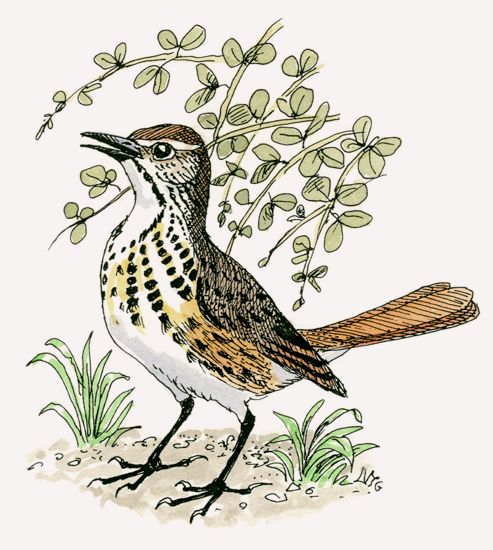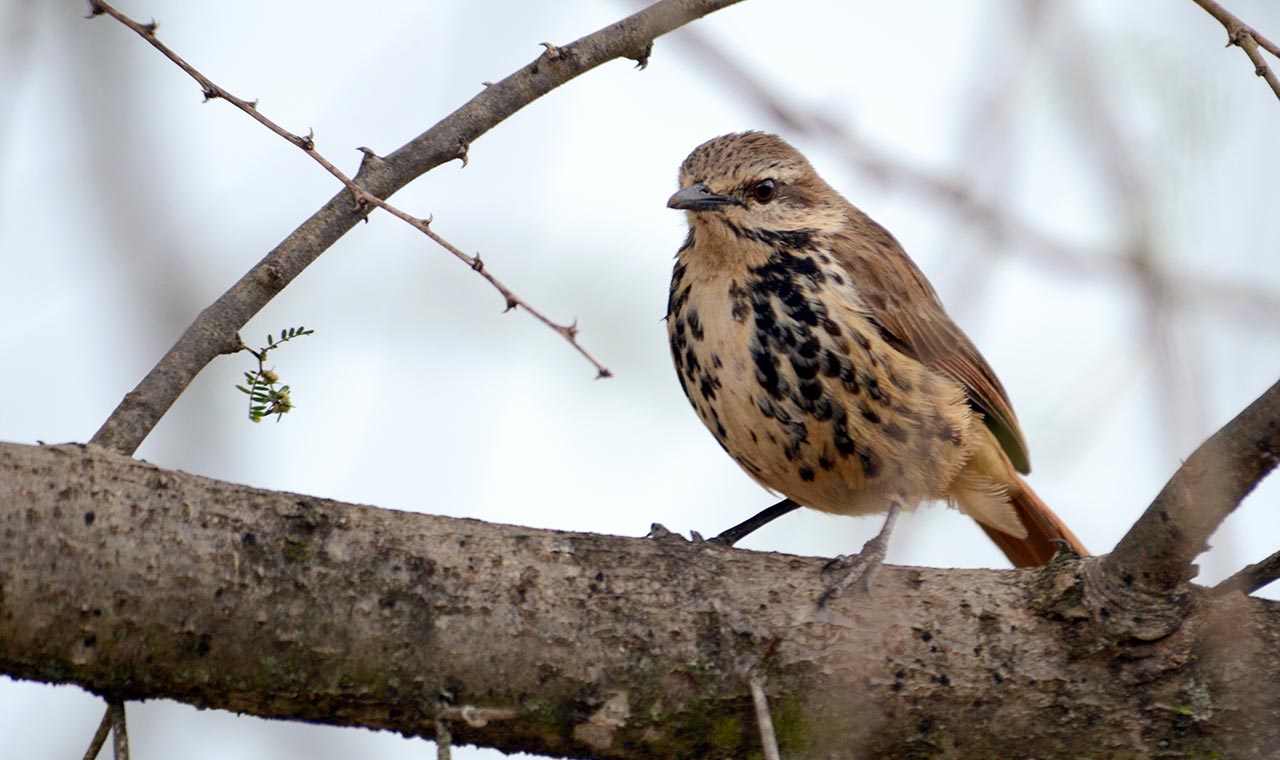Communication
Spotted palm thrushes sing a series of sweet—and often loud—variable calls.
Behavior
Spotted palm thrushes spend their days foraging on the forest floor, rummaging through leaf litter, or prowling for food in thickets.
Diet
These thrushes feed on insects and plant parts.
Breeding
Spotted palm thrushes build nests in palm trees. Typically, the female lays one to four eggs, which she incubates. Thrush chicks hatch in about 11 days.
Population in Kenya
Kenya’s spotted palm thrushes are found in wide swaths of thickets, gullies, and dry riverbeds at elevations below 5,250 feet (1,600 m).
Range & Habitat
Spotted palm thrushes are found in the Democratic Republic of the Congo, east to Tanzania, Kenya, and Uganda, and north to Sudan, Ethiopia, and Somalia, They prefer dry forests and savanna or shrub land.



